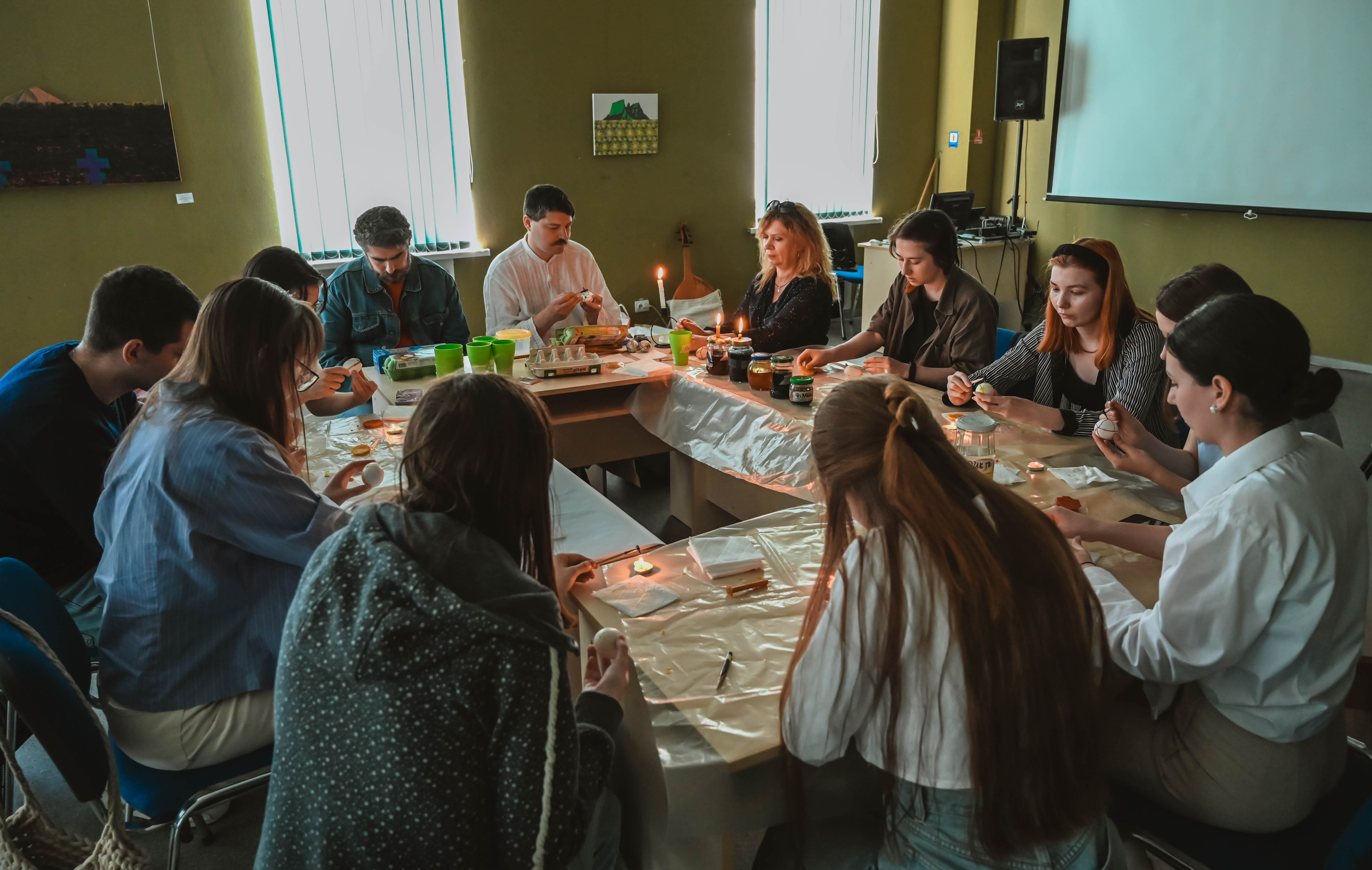The students of the Department of Fine Arts of Faculty of Philology, Psychology and Pedagogy attended a master class in Easter egg decorating by the artist and kobzar, researcher of Ukrainian folk art, folk architecture and ancient Ukrainian traditions, Candidate of Architecture, Associate Professor of the Department of Fine Arts of the National University “Yuri Kondratyuk Poltava Polytechnic” Nazar Bozhynskyi. The event was initiated by the active students of the Faculty of Philology, Psychology and Pedagogy, the initiative group was headed by a student of group 301-AOP of the Department of Fine Arts Ruslana Borodai, and the students themselves took an active part in the preparation of the master class.
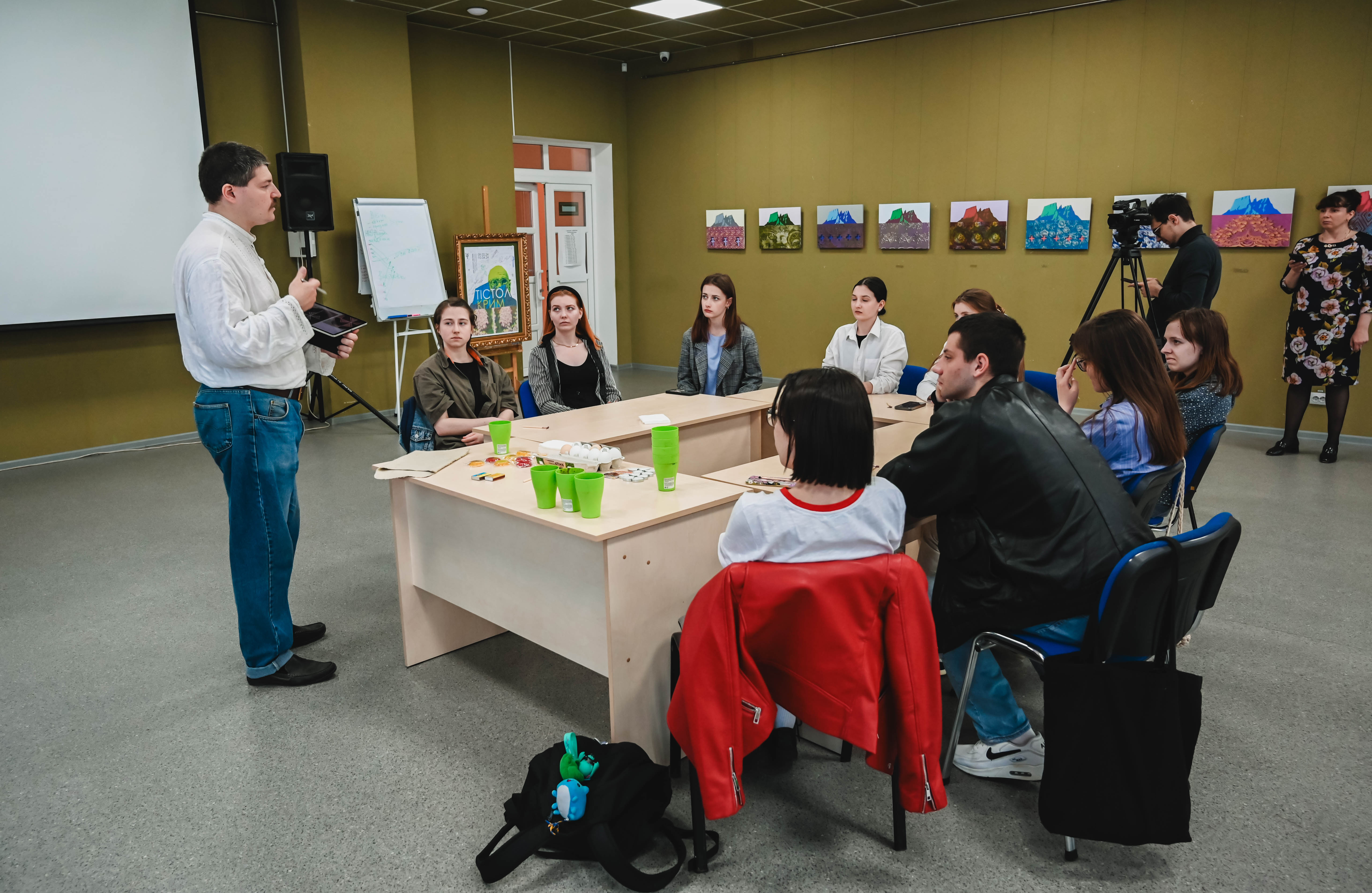
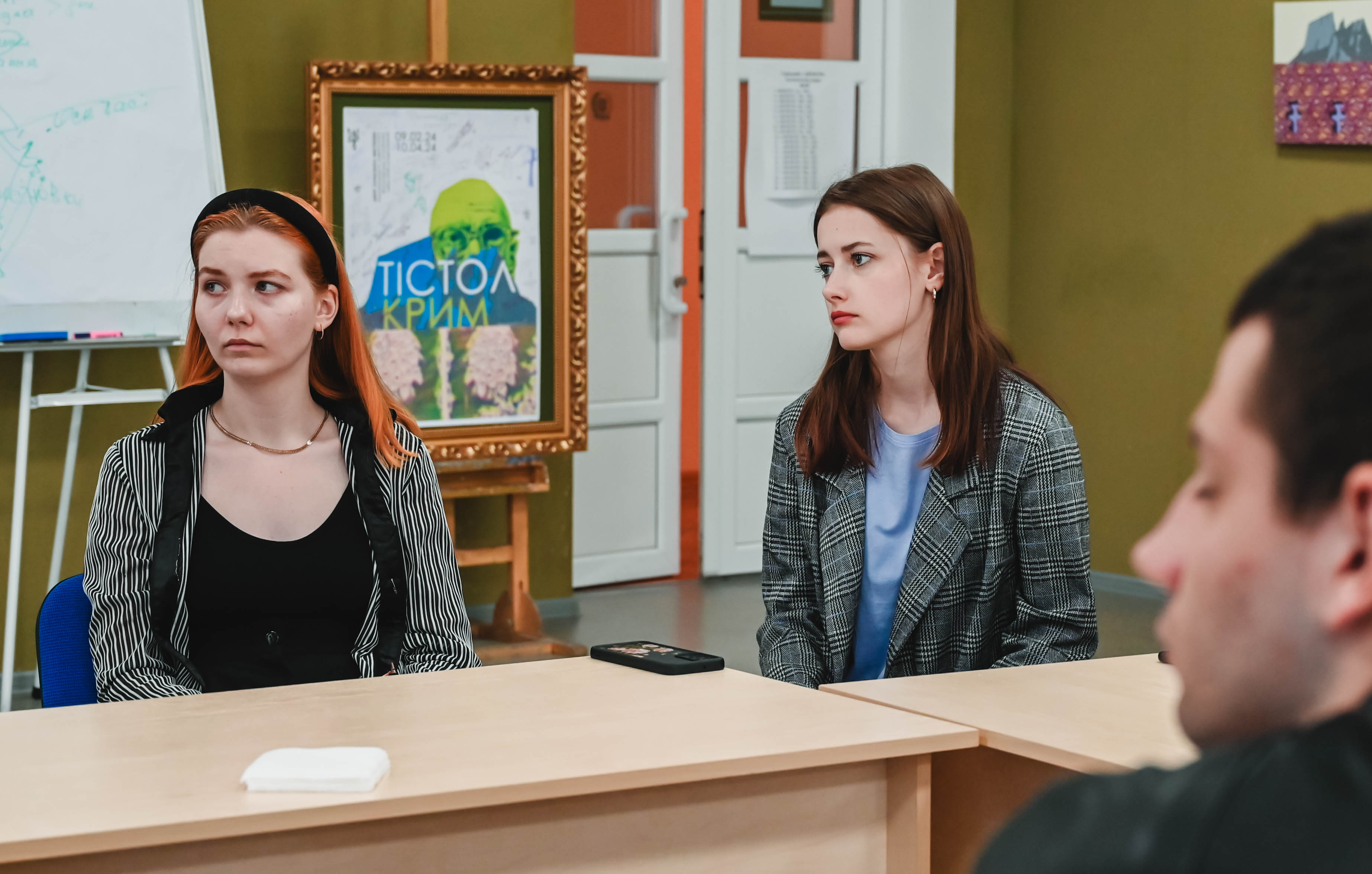

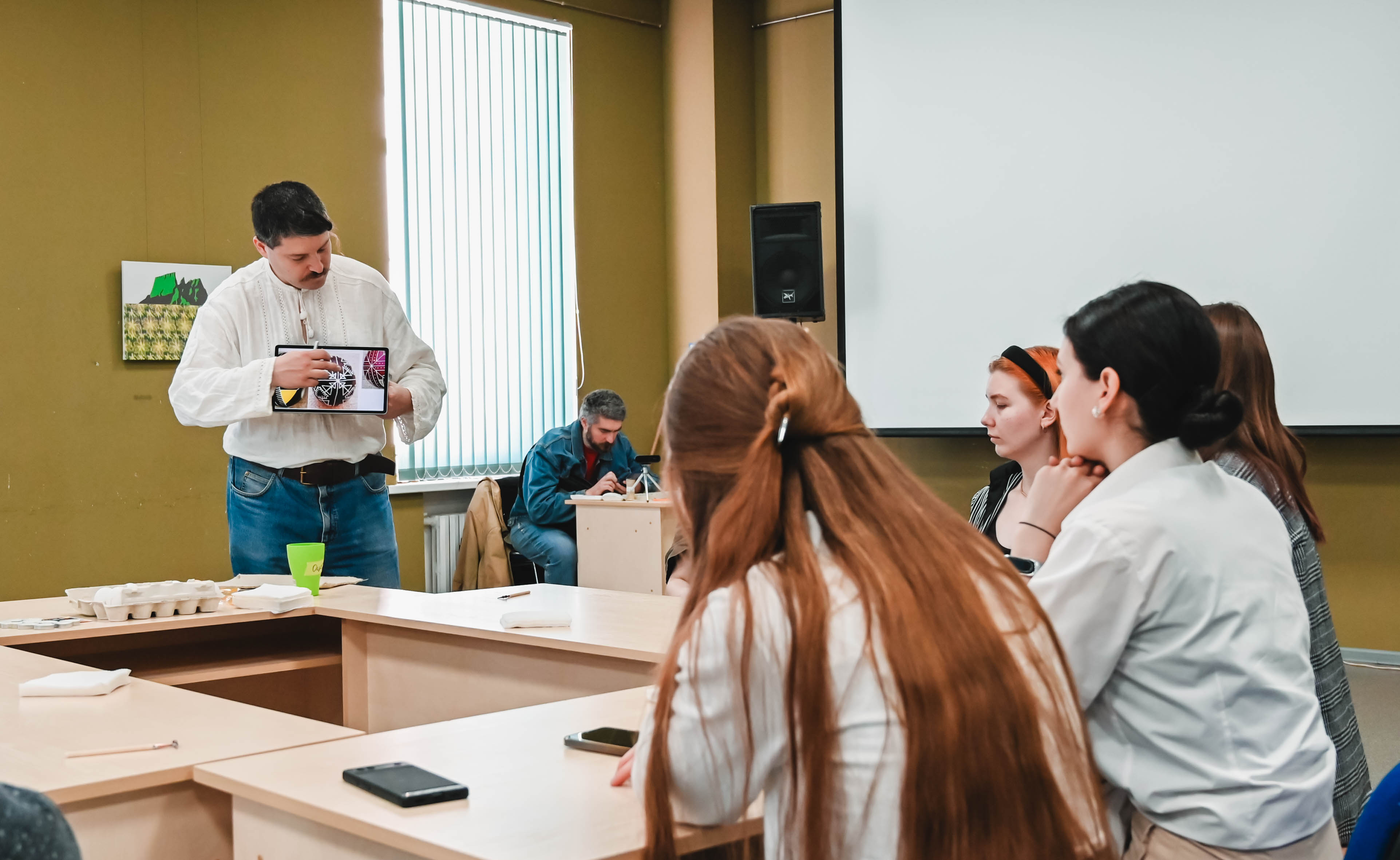
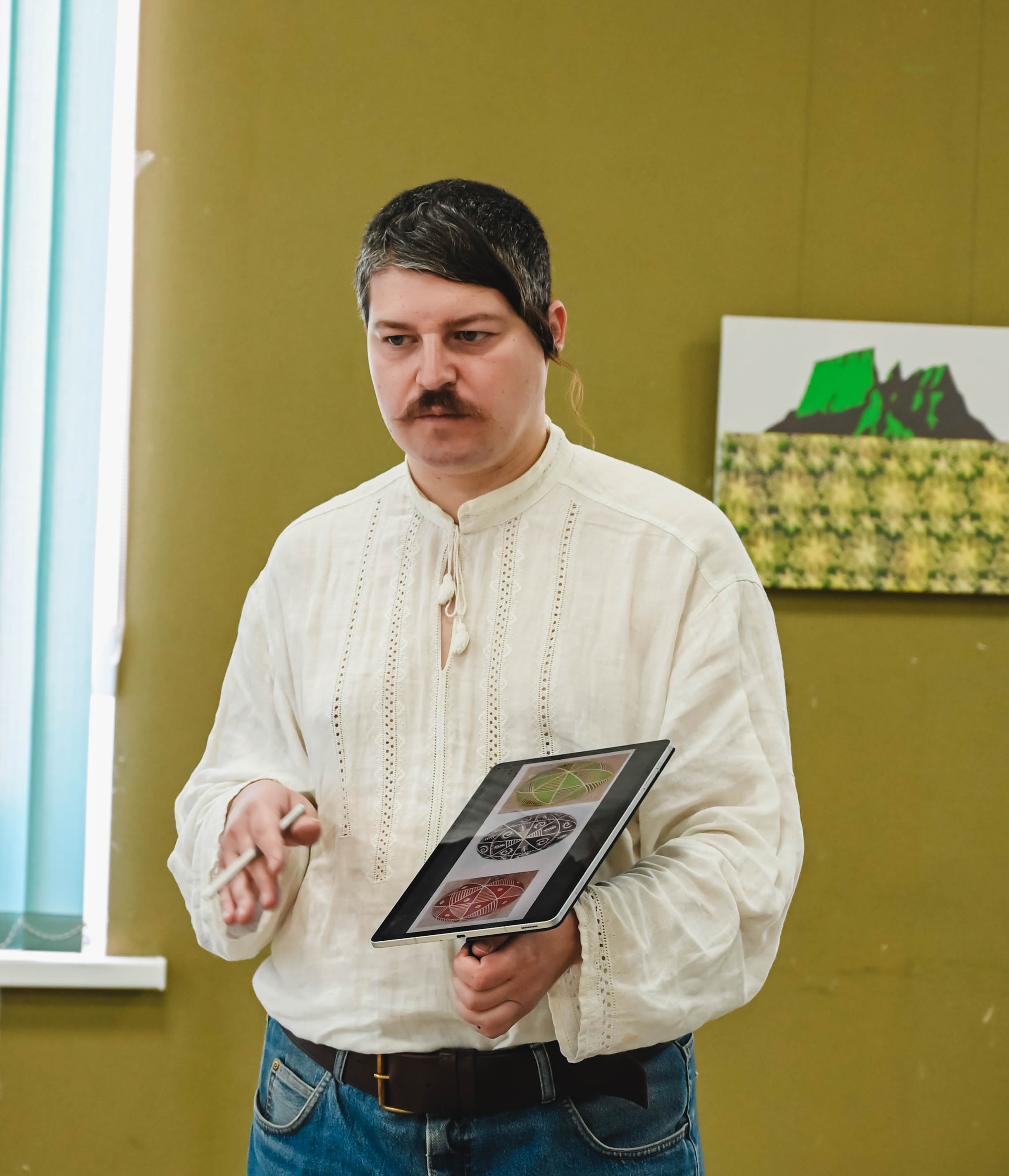
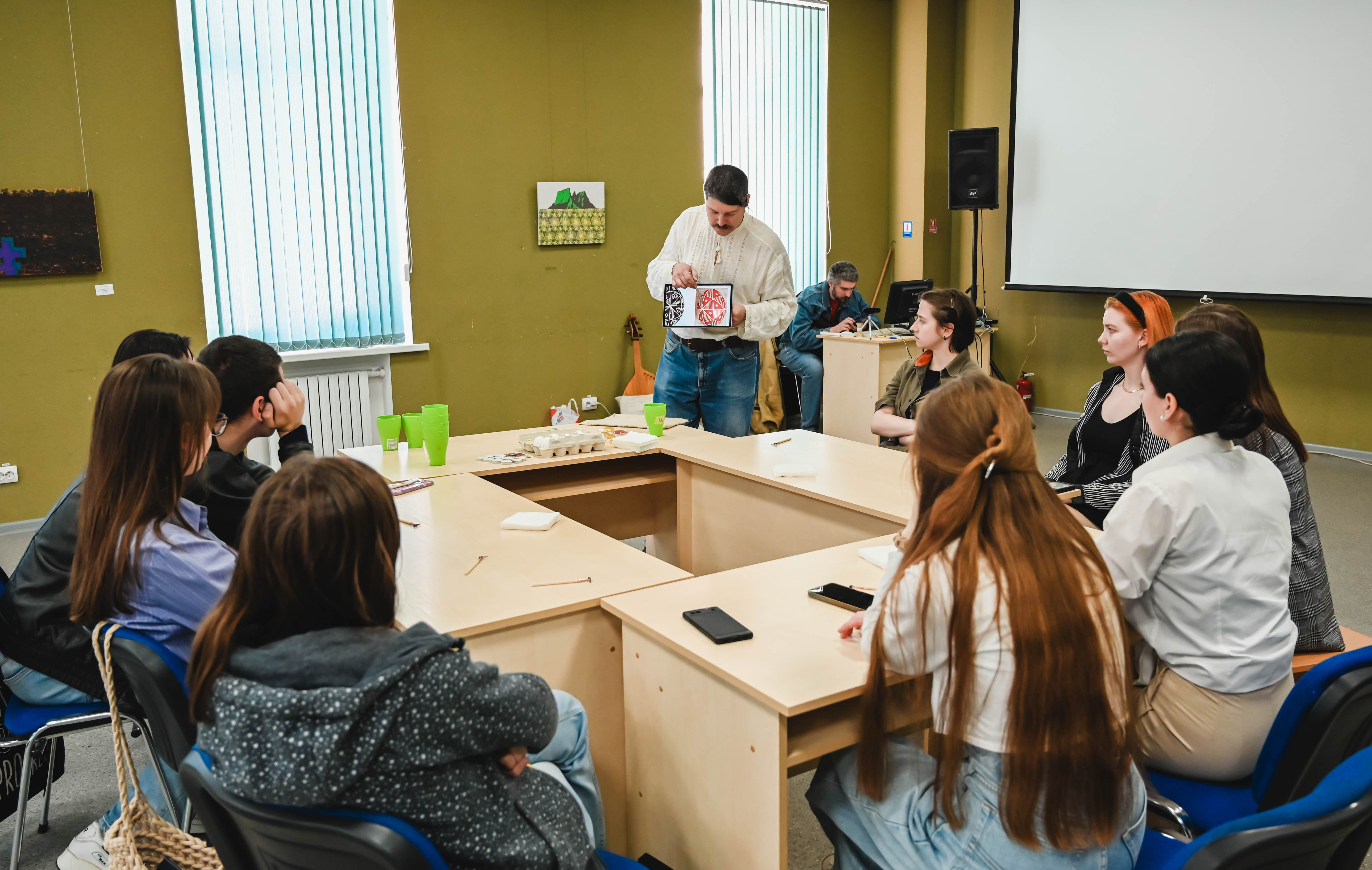
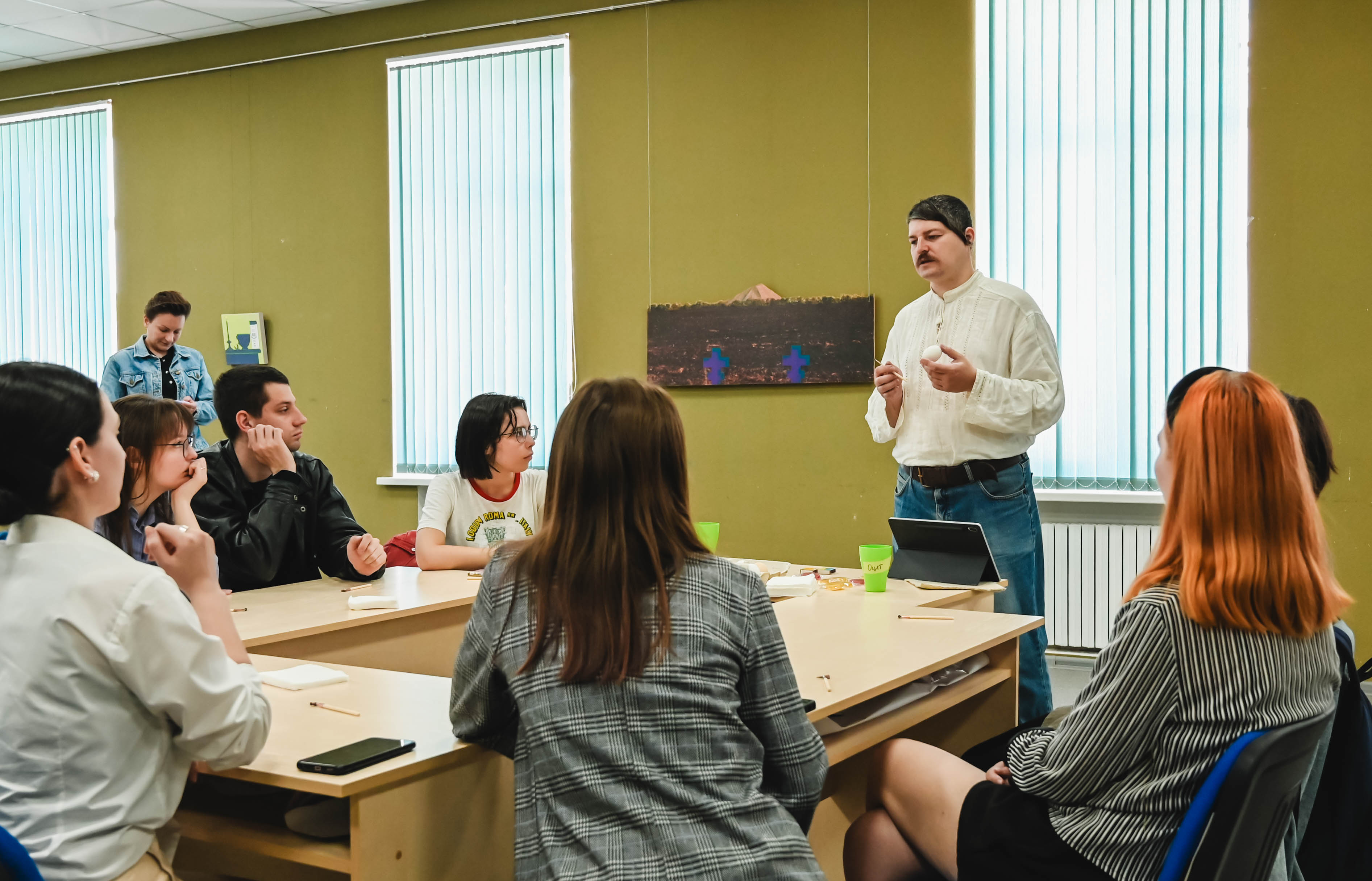
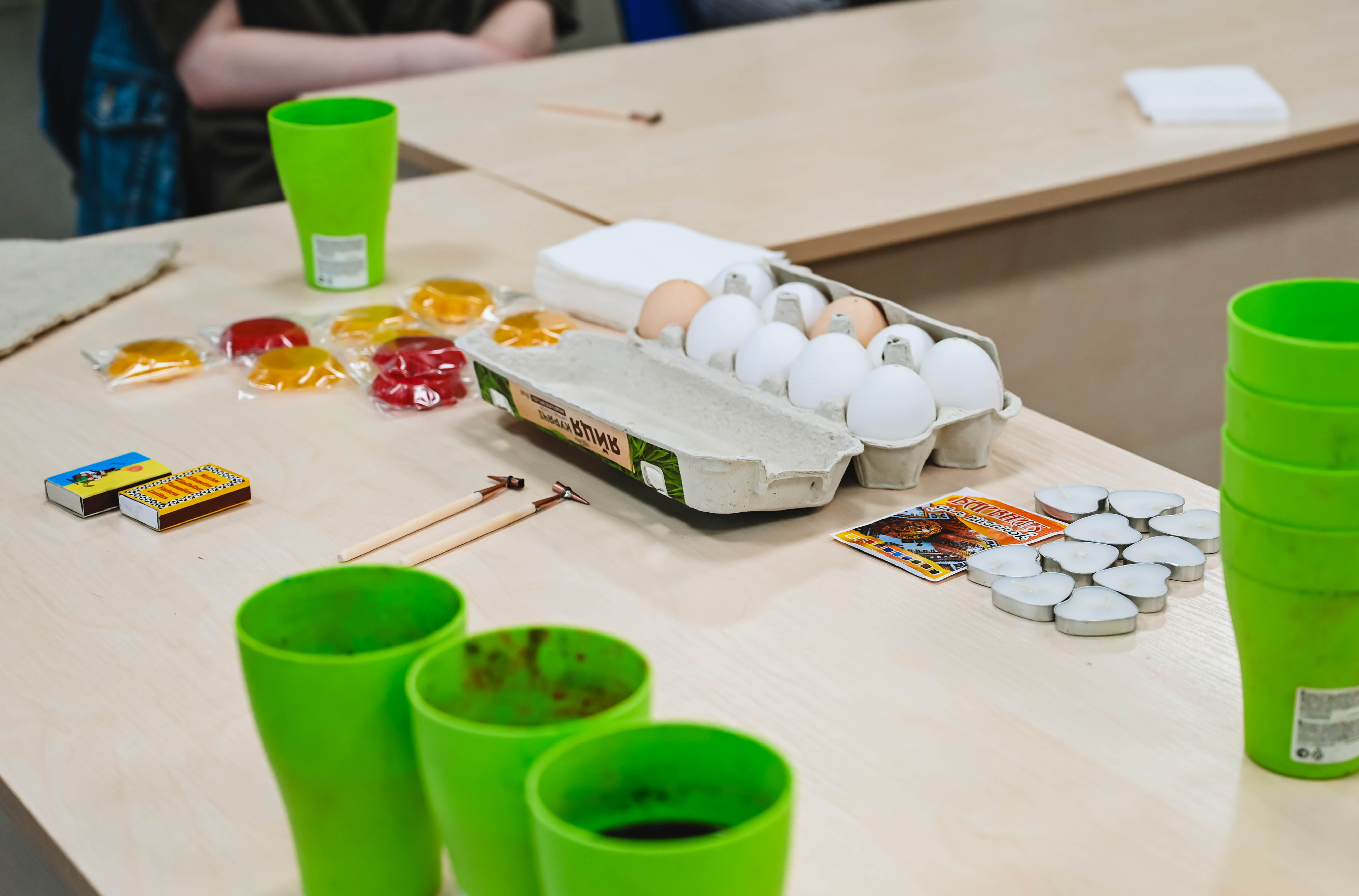
The ability to paint Easter eggs is considered a special kind of art. According to Nazar Bozhynskyi, Easter egg decorating does not require additional professional skills, only personal qualities, since even a small child can create a masterpiece with perseverance, diligence and patience. This process also requires pure thoughts, an open mind and the author’s imagination.
At one of the unique art spaces, the Centre for Contemporary Art of Poltava Polytechnic, future artists learned to make Easter eggs, mastering various techniques and enriching their knowledge about the regional peculiarities of Easter eggs in the colours and styles of different regions of Ukraine.
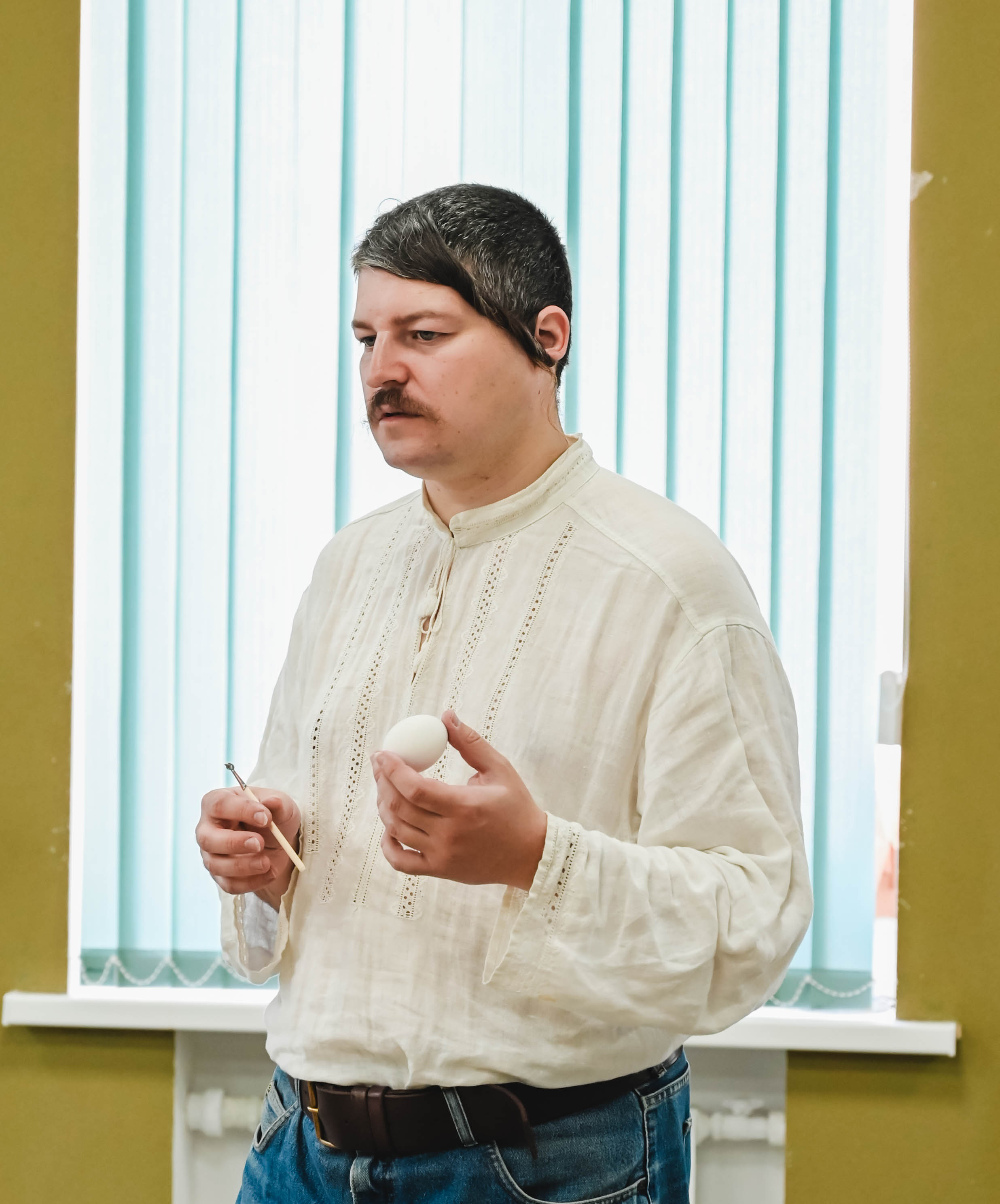
“Long ago, our ancestors used to encode wishes for the year on eggs, just as we now write plans for a certain period of time or letters to the future. Each symbol and colour on an Easter egg has a specific meaning. For example, “rakes” meant wishes for rain, dots meant a good harvest, spirals in the form of waves or zig zags meant longevity, and stars meant energy. The green colour on pysankas symbolises life, growth, development, yellow – the sun, brown – the earth, red or cherry – love, beauty and femininity. Pysanky were painted not only for Easter, but also from the New Year to the solstice. It was believed that with the sun comes energy that helps make all wishes come true,” – explained the author of the master class, Associate Professor of the Department of Fine Arts Nazar Bozhynskyi, showing the students samples of folk ornaments.
During the introductory mini-lecture, the artist recalled various funny incidents that happened to his students when they took up the pysanky to embody their own creative ideas in ornaments and colours.
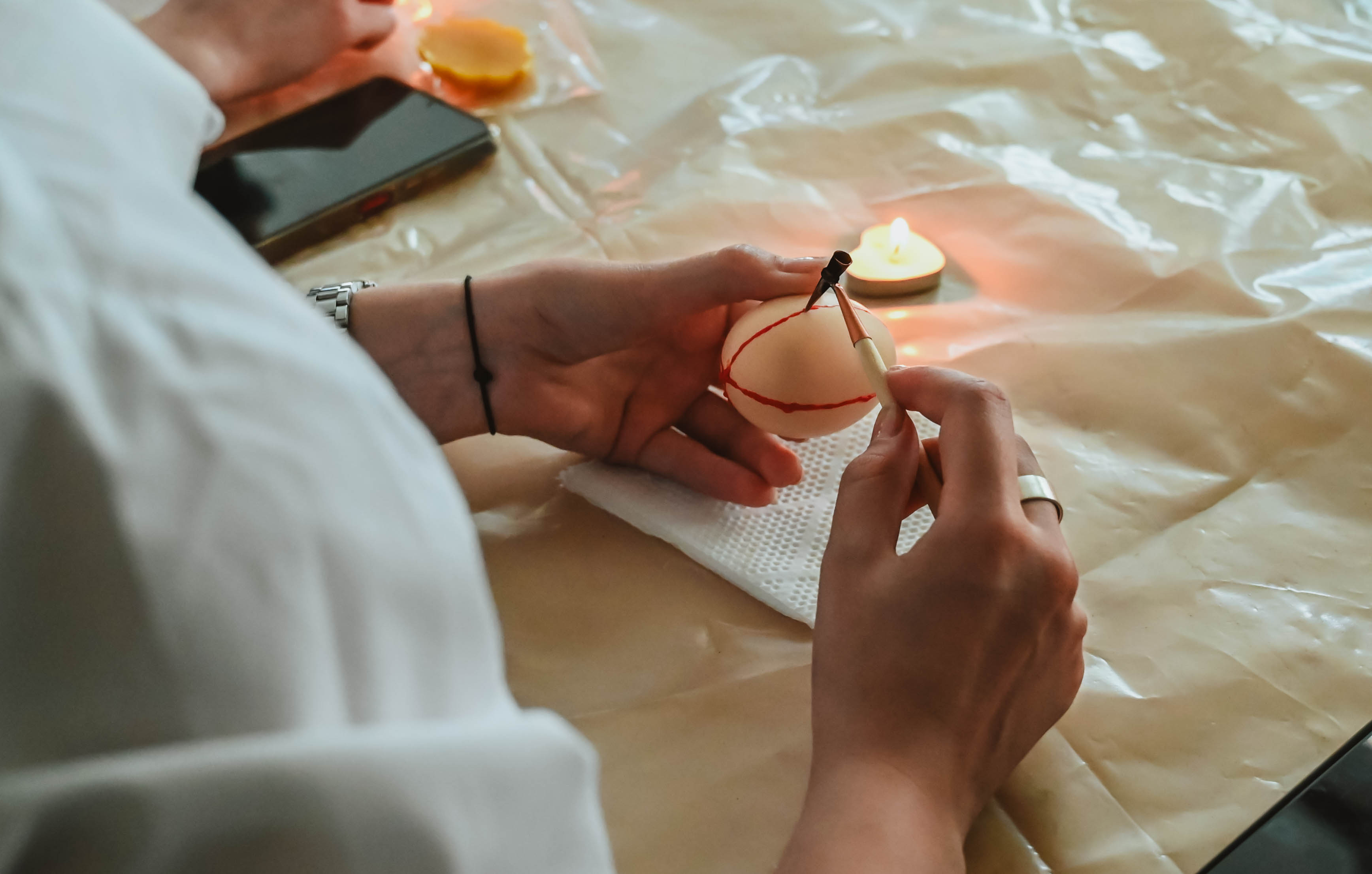
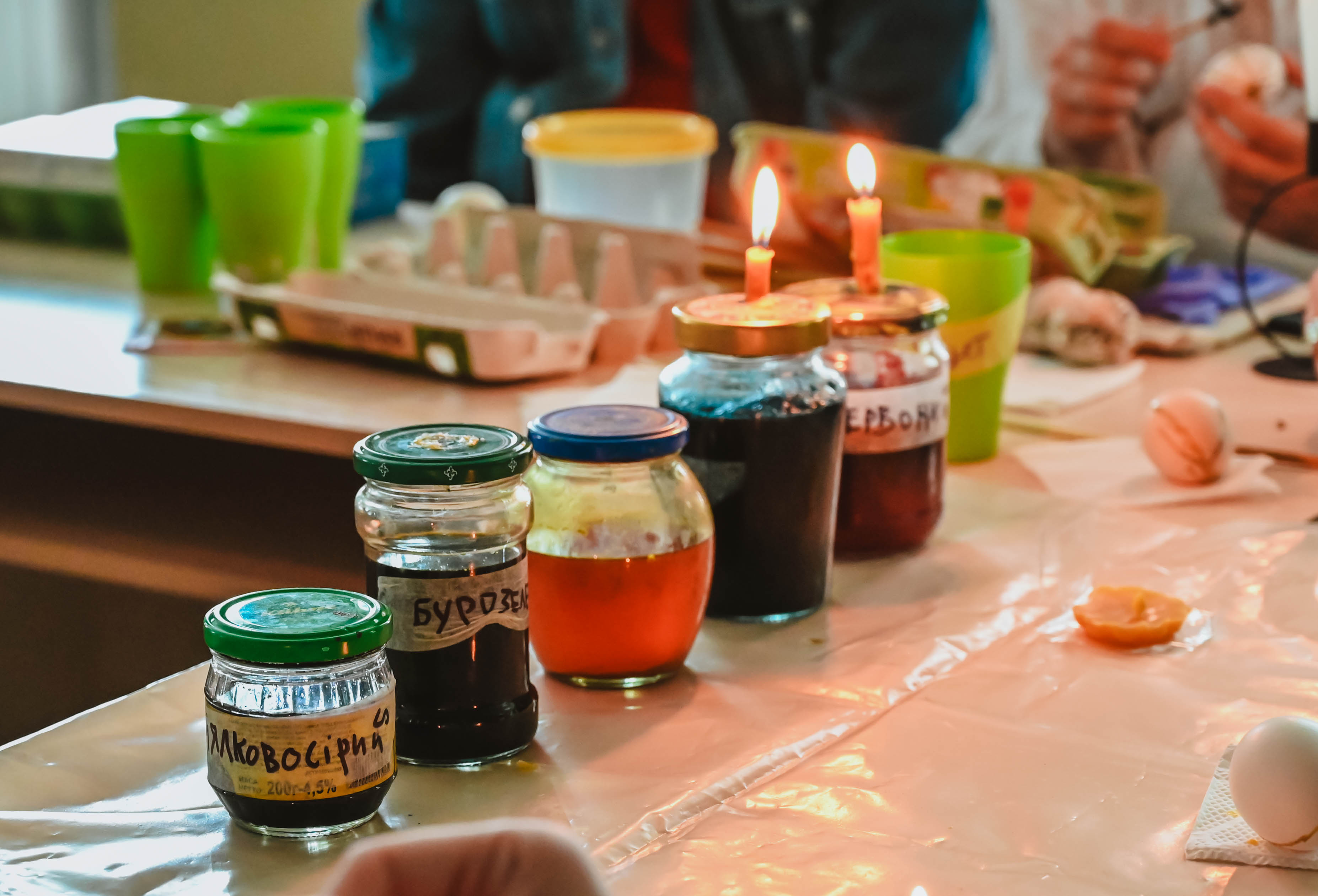
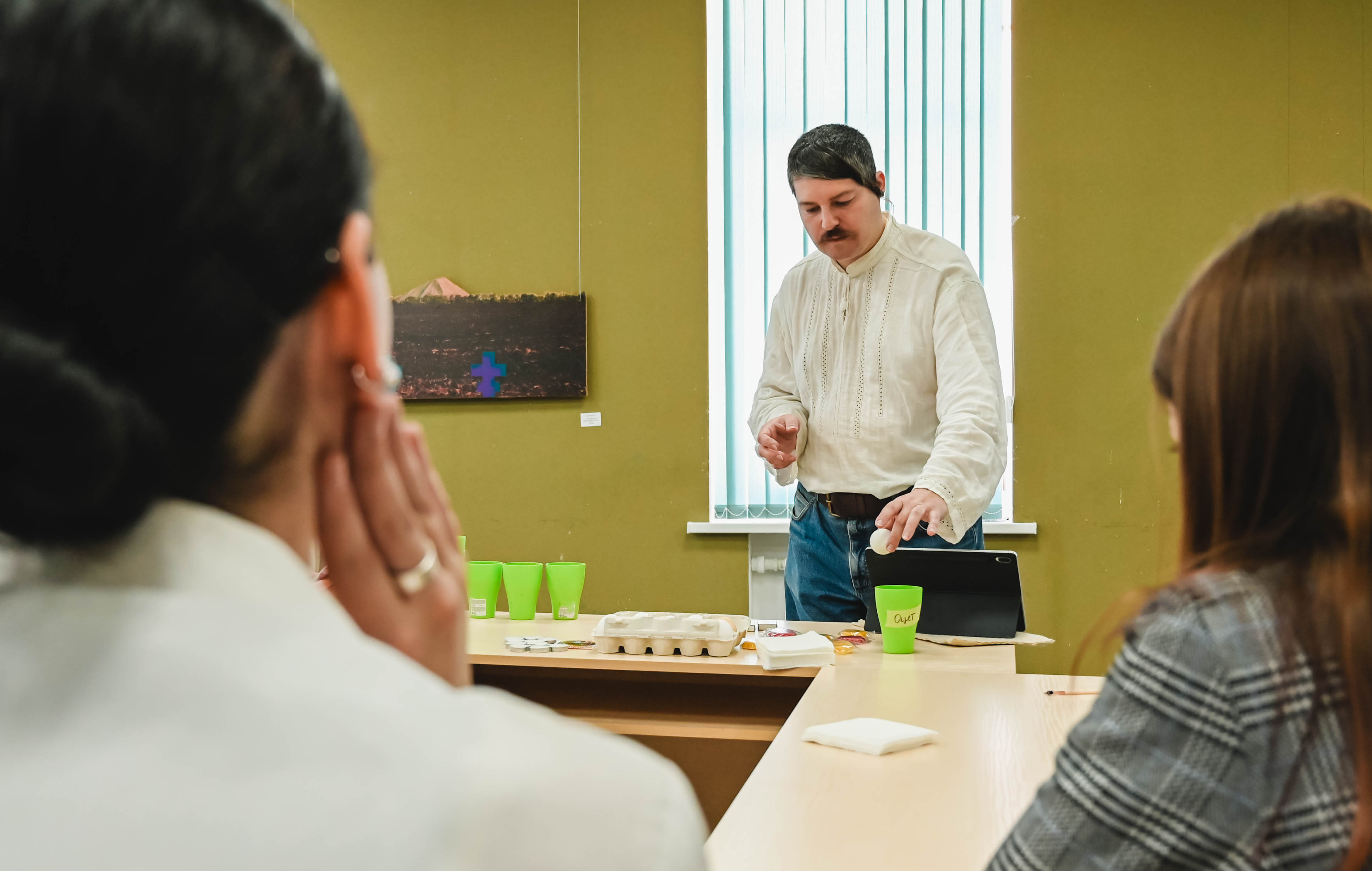
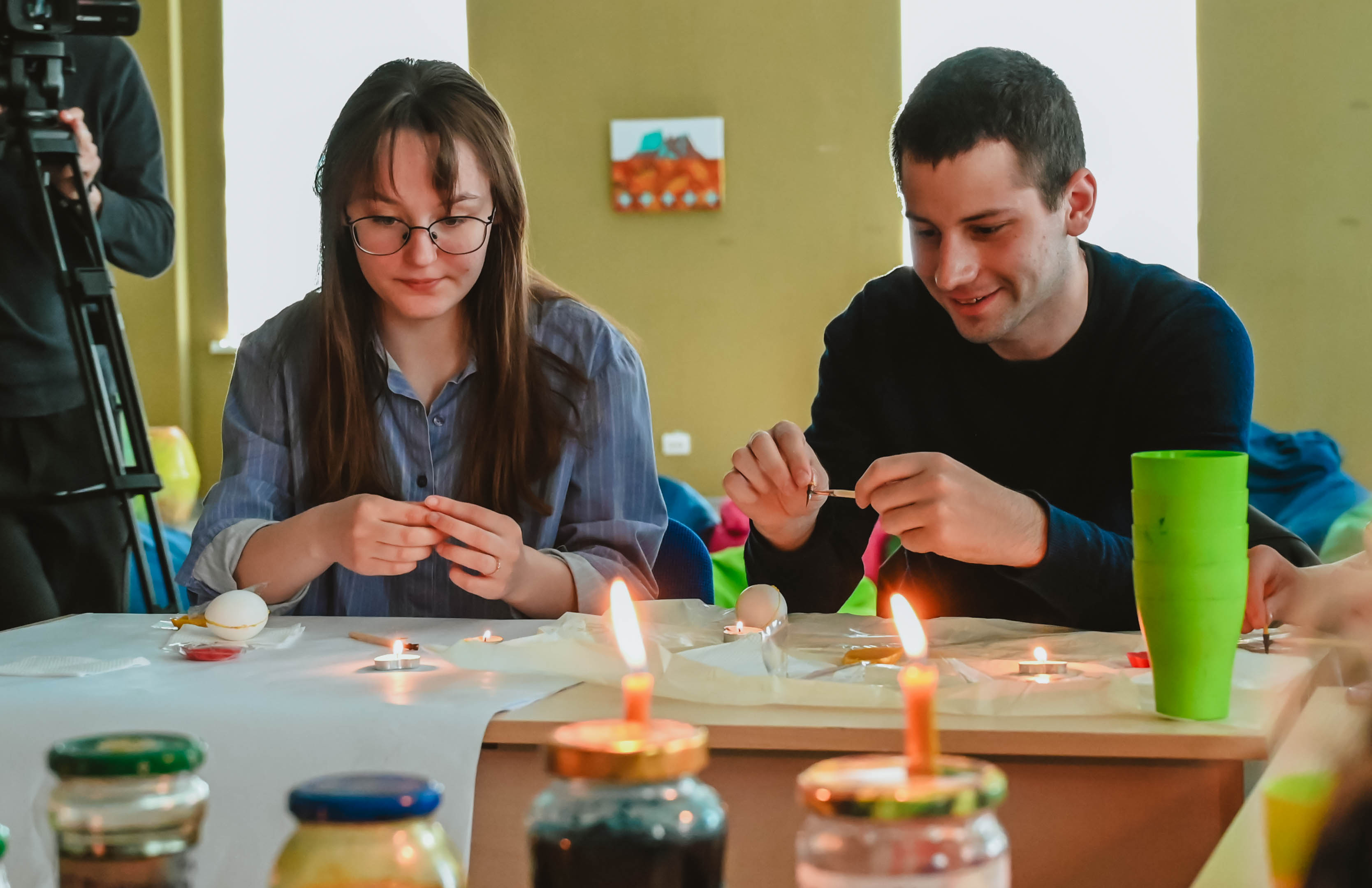
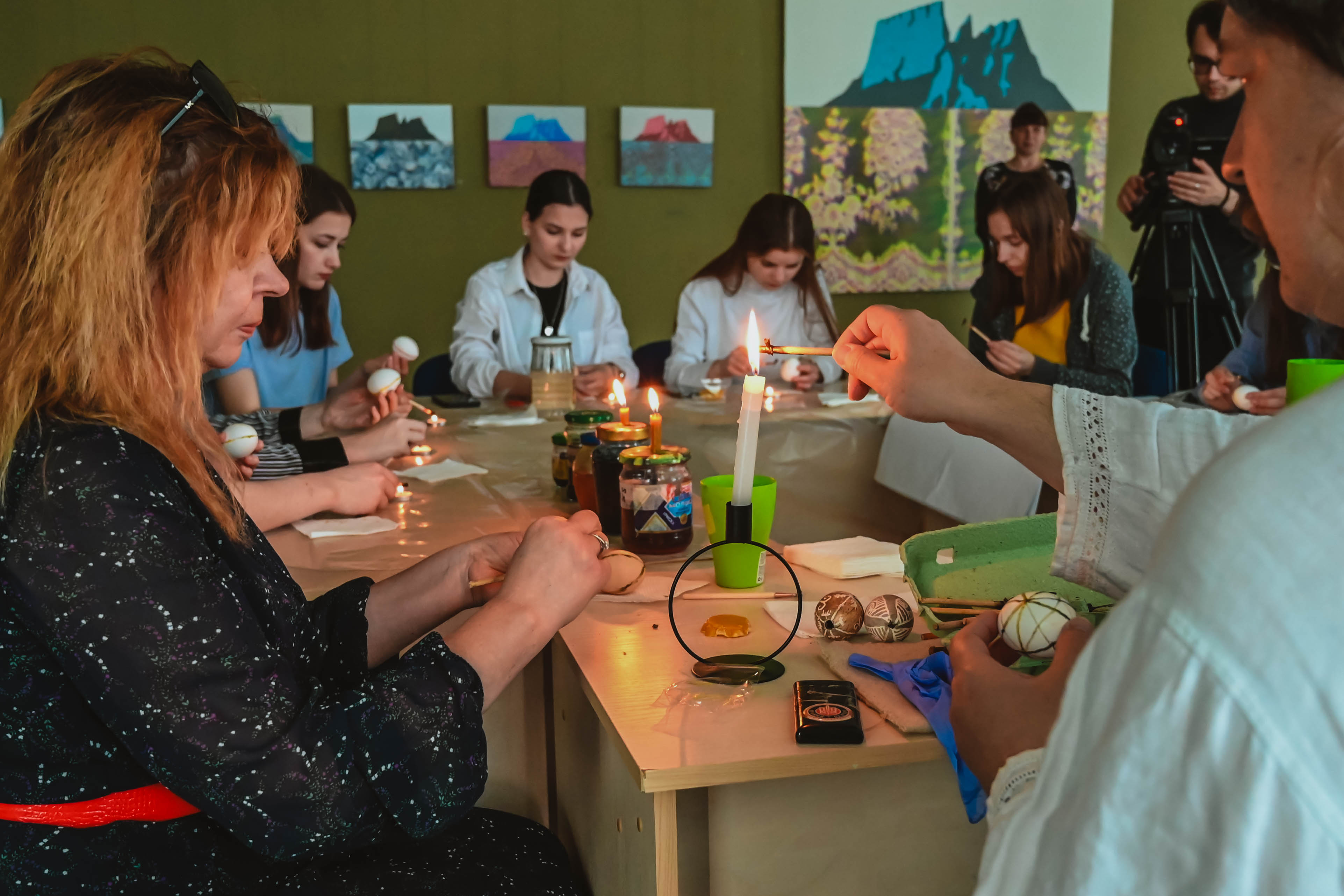

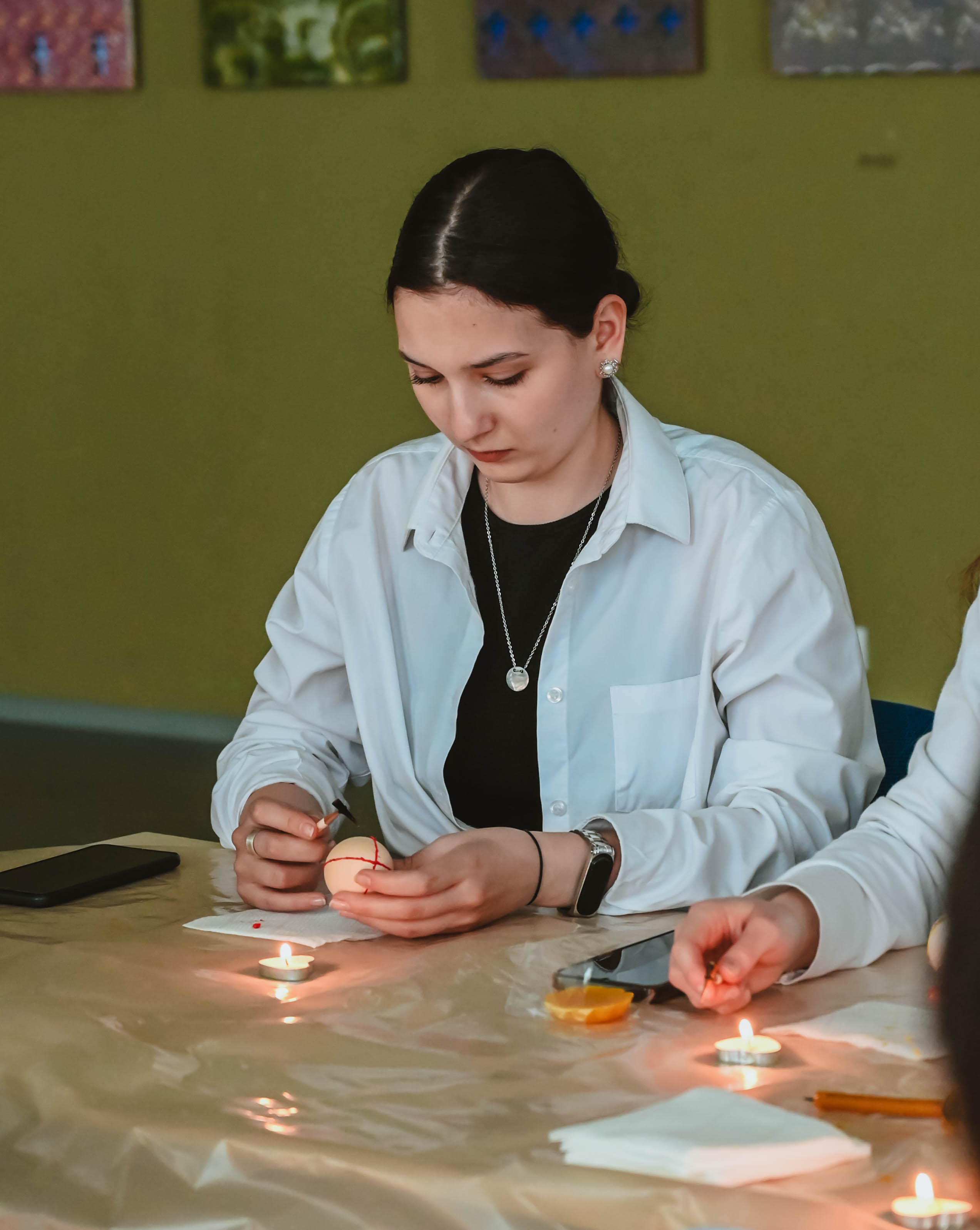
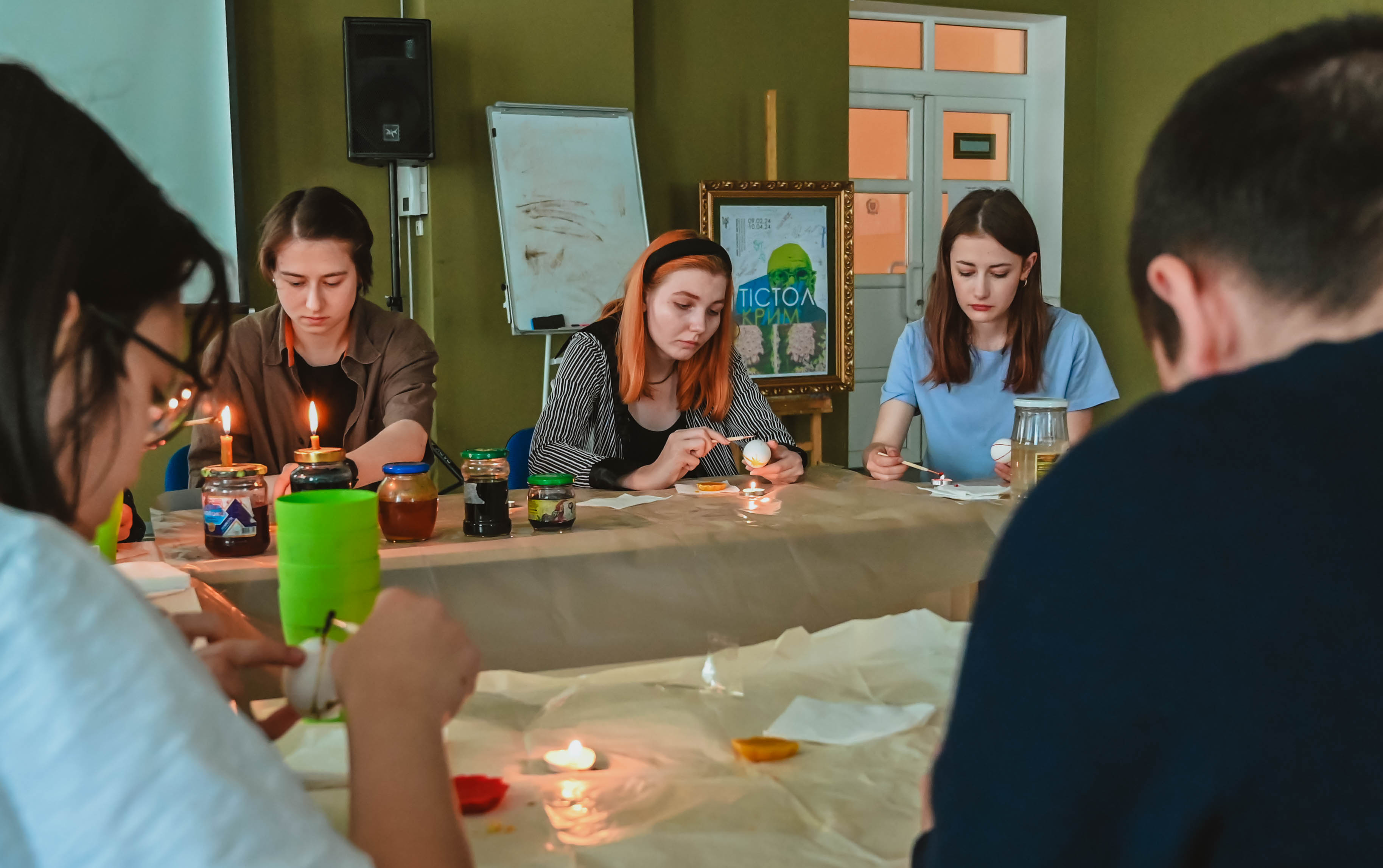
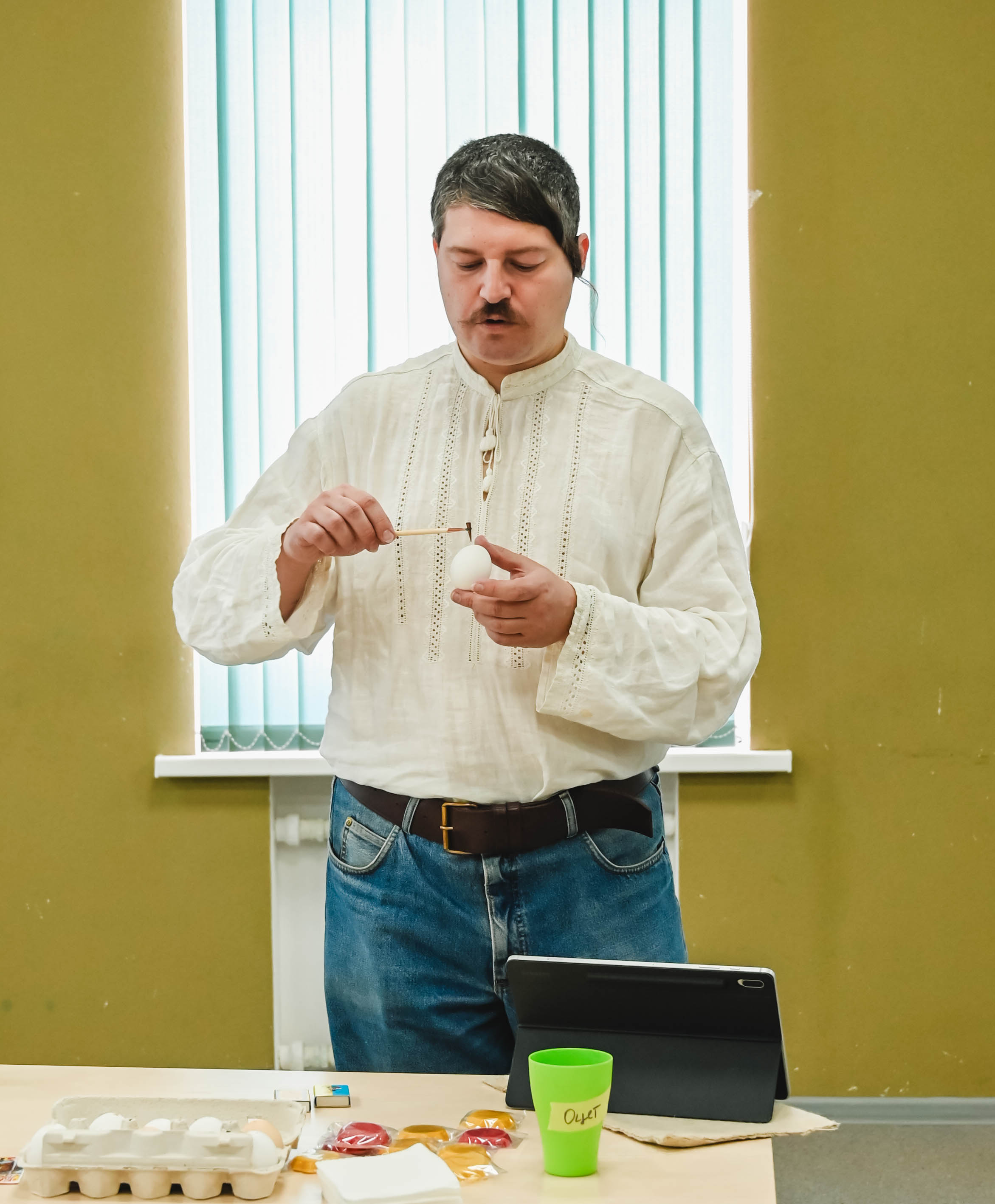

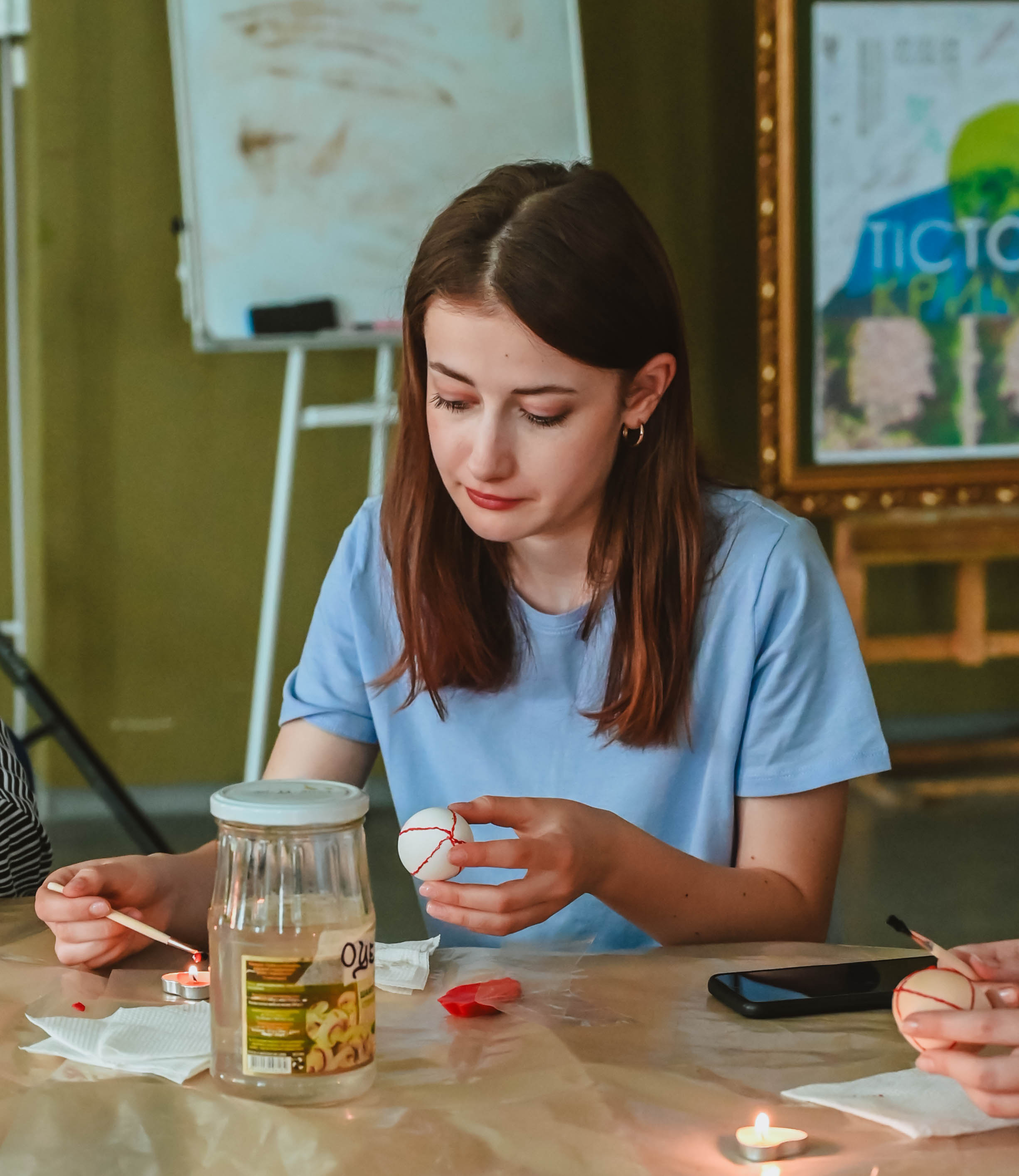
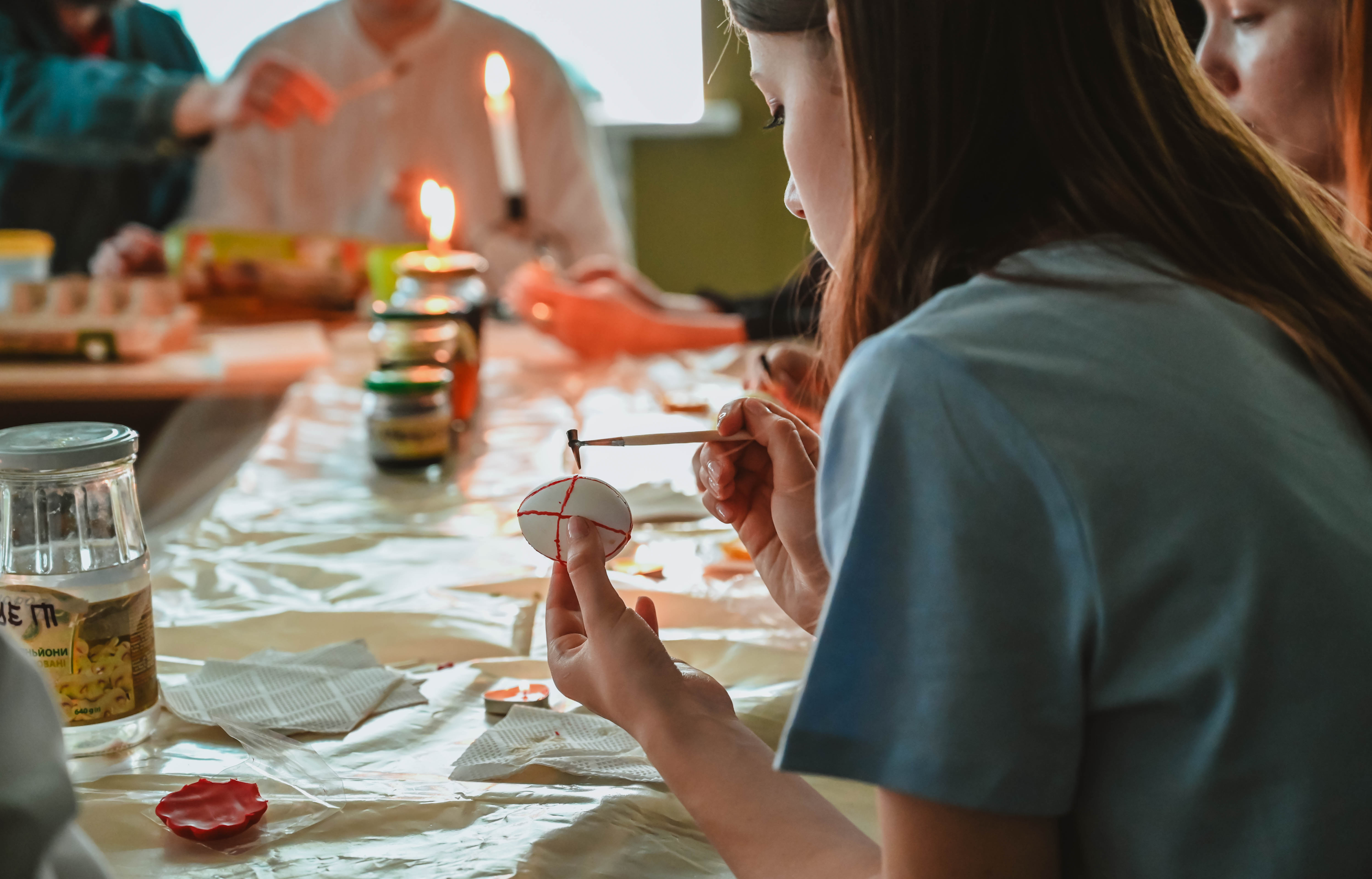
“You can paint both a full and a blown egg. You can use different techniques to blow out the white and yolk. However, we should remember the main thing – before blowing an egg, it must be washed. After that, use a pencil to mark the places where you want to make a hole with a cross, and put this mark on the sharp and blunt ends of the egg. Next, make two holes in the place of the crosses; they should not be too big. Using air, blow out the white and yolk, doing so from the blunt end.
The process of painting itself takes a considerable amount of time, but I do not advise you to create a sketch on the egg, it is better to just think about your ornament and start working on transferring it to the future pysanka. At this stage, we will need a pysachok, a cleaner for it, and a piece of wax or a wax candle. The wax becomes black and smoky in the process. This is how it should be. The blacker the wax, the better you can see it on the egg.
Light the candle and heat the pysachok, then fill the pysachok with wax. To do this, bring a piece of wax to the tool. Under the influence of temperature, it melts and fills the cone of the pysachok. You will need to repeat this step from time to time during the process. You can move either the pysachok or the egg itself. However, the instrument should always be on top. Some people write towards themselves, others away from themselves. It is at your own discretion. From time to time, pysachok should be cleaned. This is done from the bottom when it is hot,” – comments the artist on his own actions to the participants. In front of the students, working together with them, Nazar Bozhynskyi created his own pysanka, using one of the most popular painting techniques.
The students also tried working with a pysachok, heating the wax with a candlelight and using mostly natural colours in the process of decorating Easter eggs.
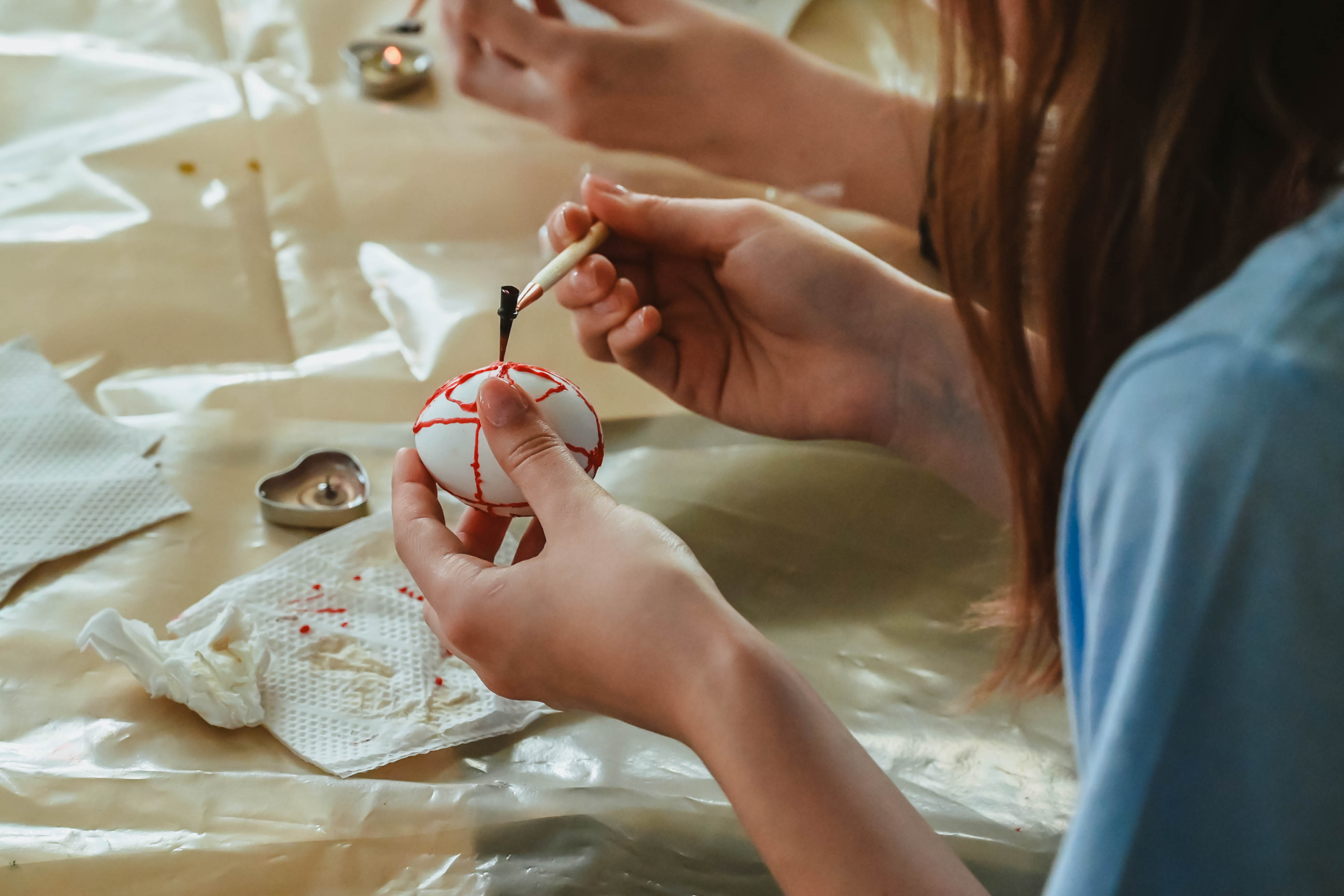
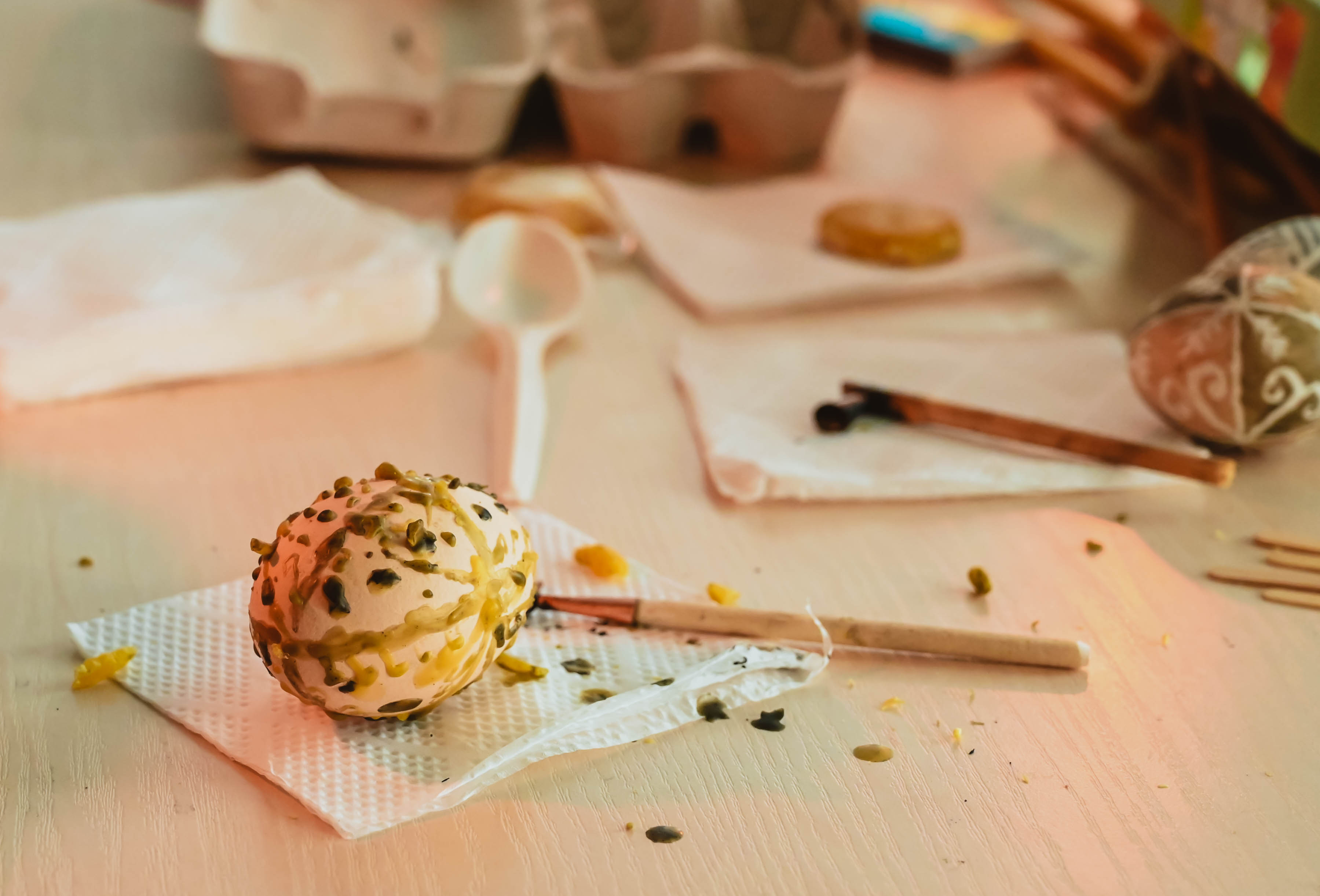
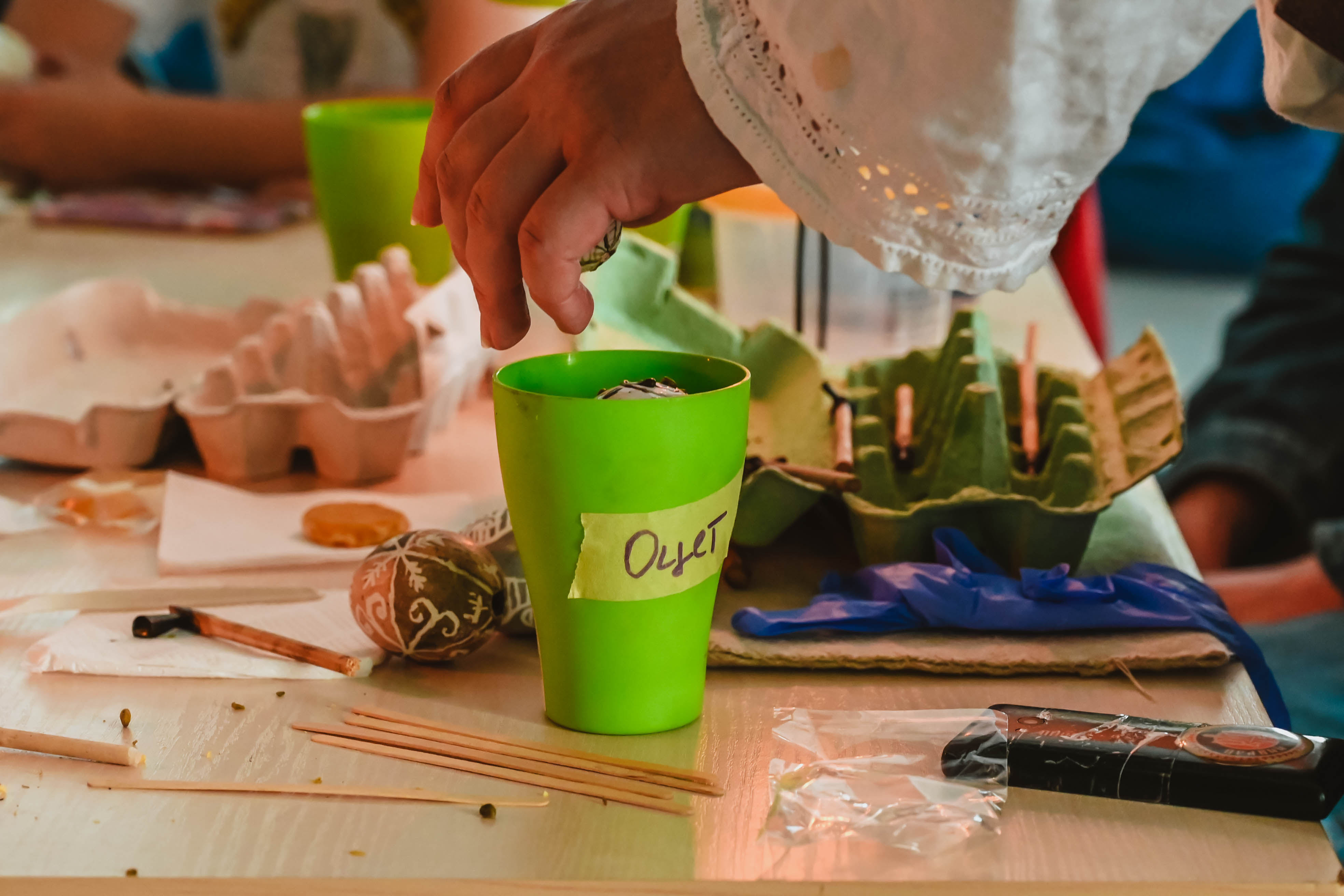


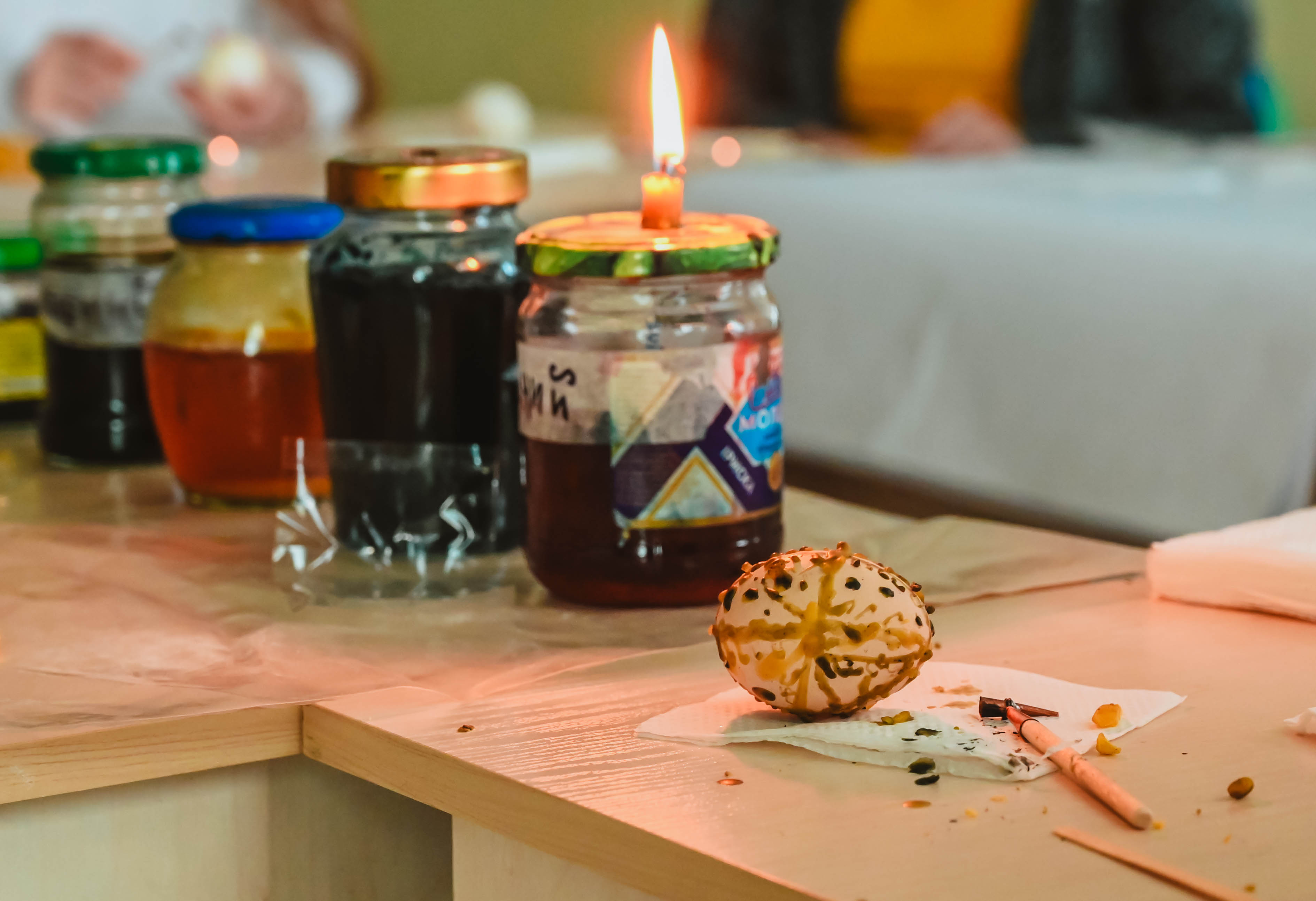
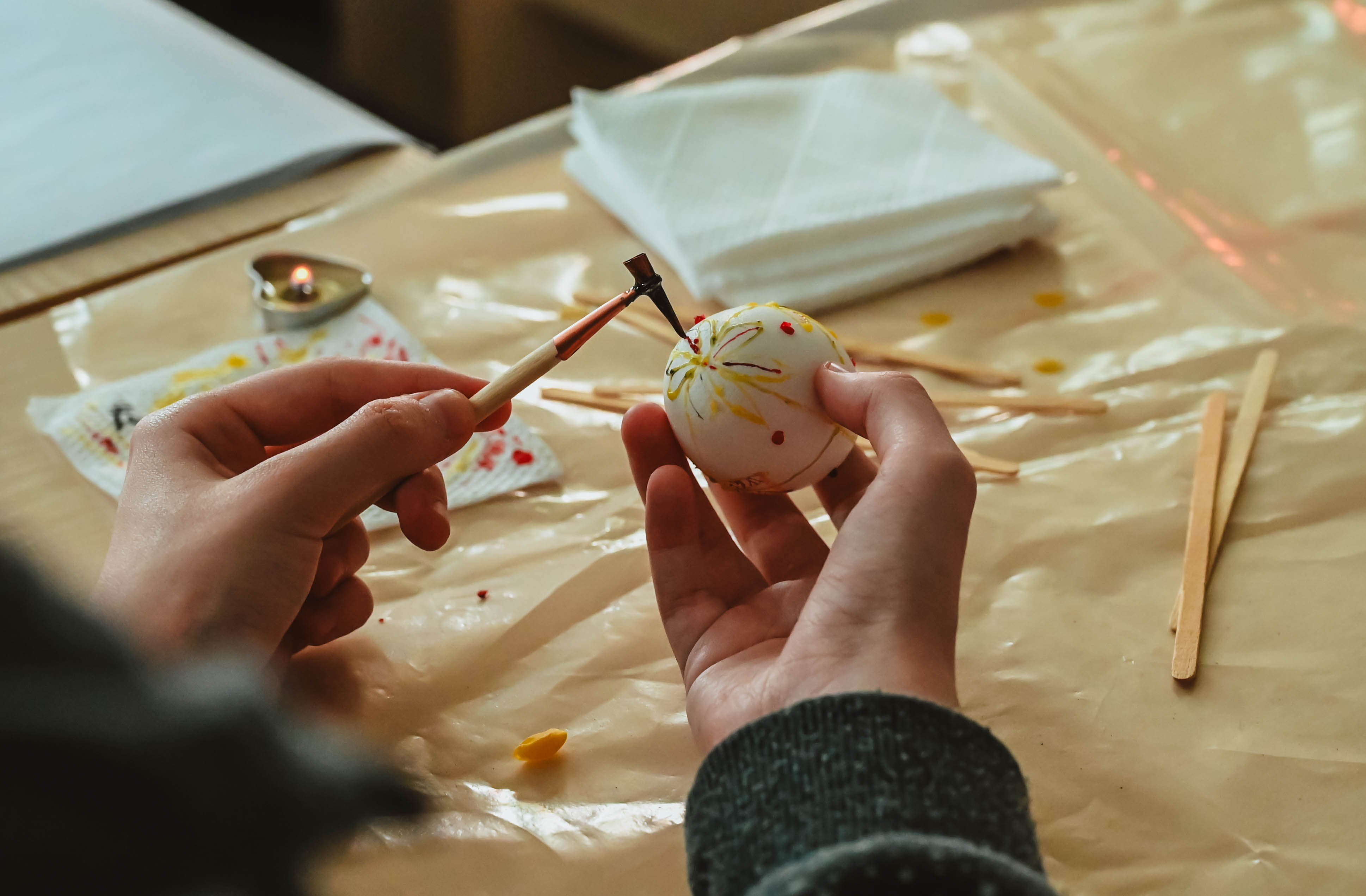


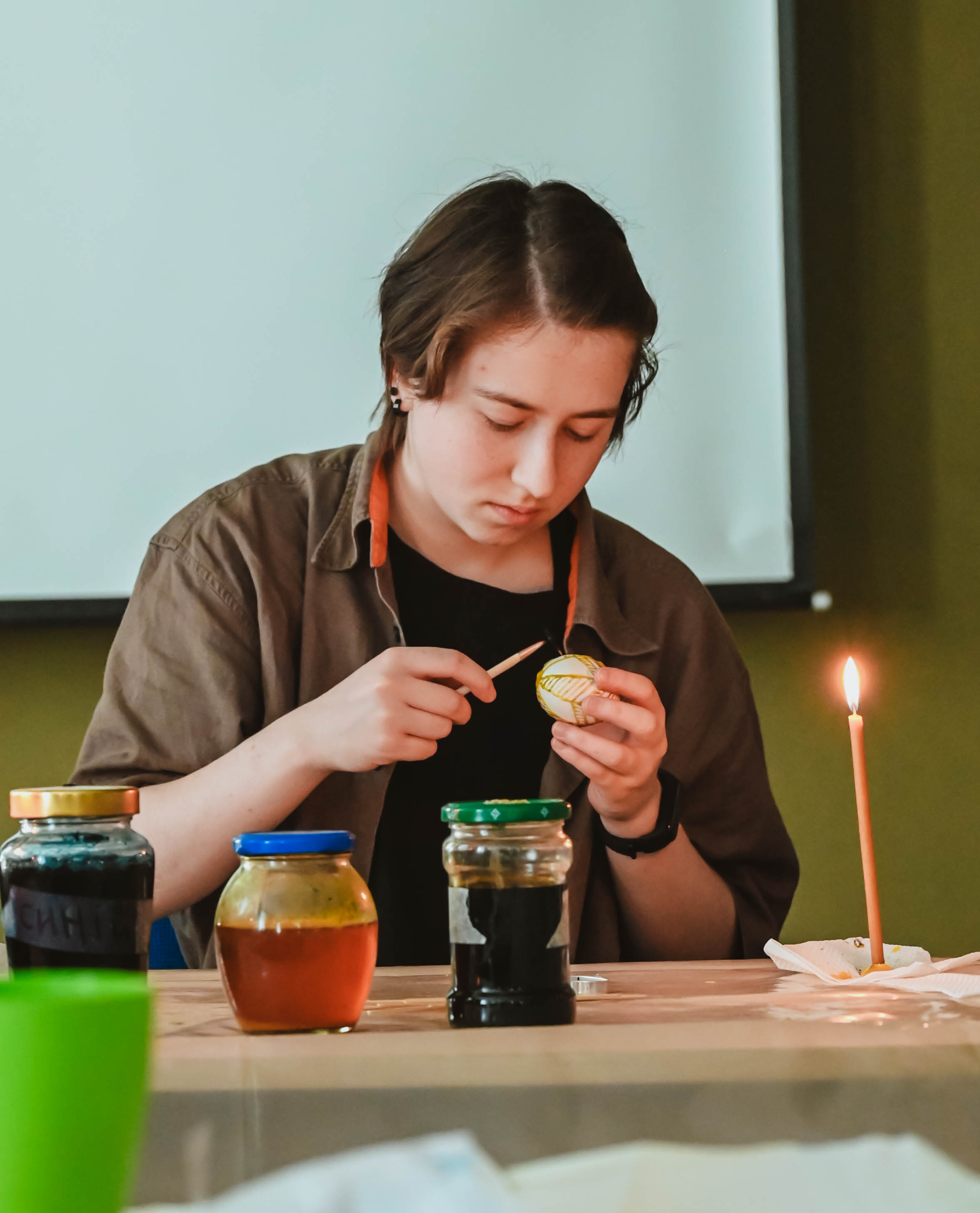





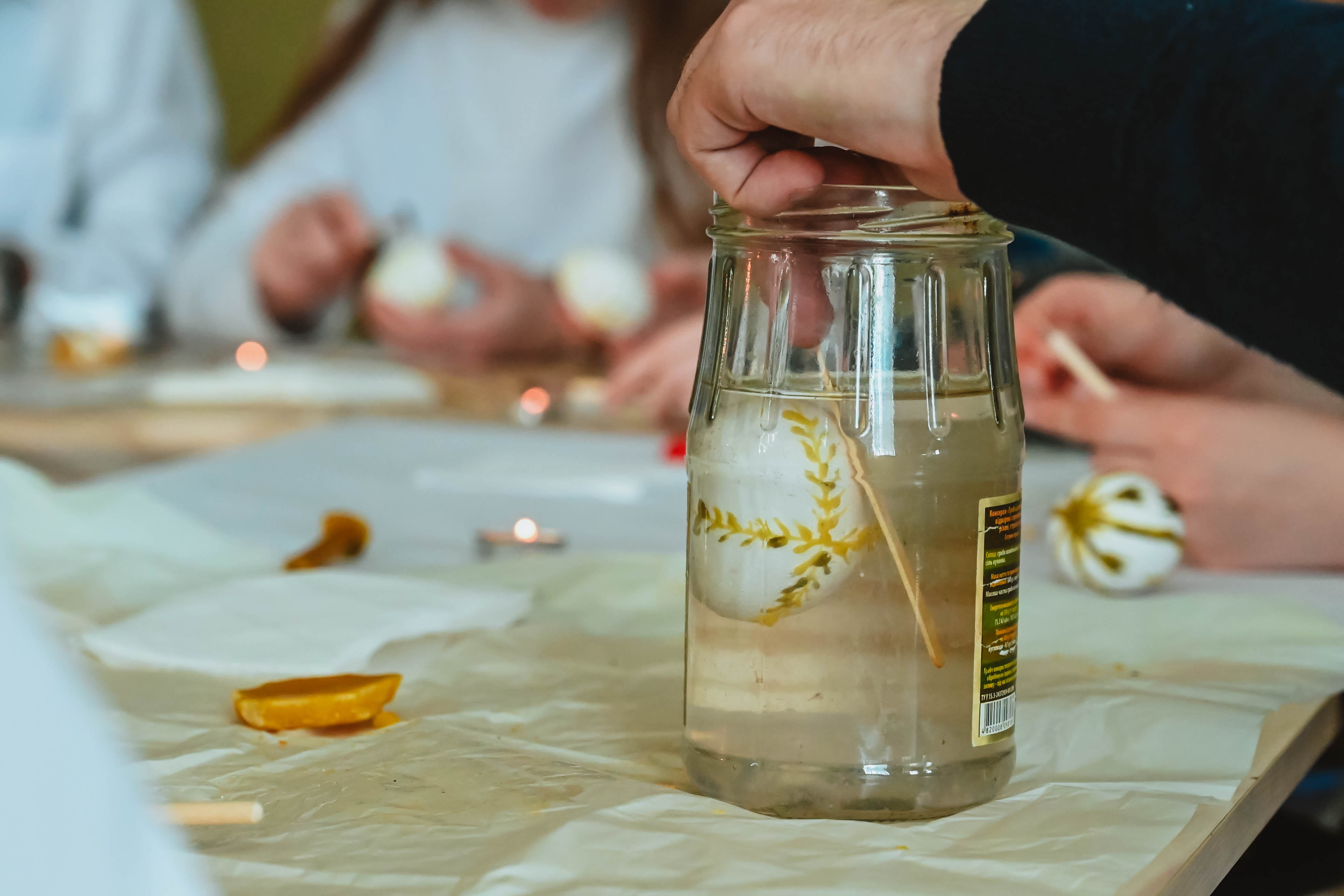
After applying the hot wax to the eggs, the participants used vinegar and natural dyes to fix the result. First, you need to dip the egg in vinegar and swirl it in the solution with a spoon. This is necessary to degrease the surface of the egg, otherwise there will be unpainted areas. The order of colours when painting eggs is determined by the principle of light to dark: yellow, orange, red or green, blue, cherry, purple, brown, black. And finally, you have to hold the almost finished pysanka to the side of the fire, wiping it with paper from time to time.
For the first time in her professional life, the Head of the Department of Fine Arts, Candidate of Art History Tetiana Zinenko painted Easter eggs and shared her pleasant impressions: “The magic of decorating Easter eggs on the eve of Easter is really fascinating and inspires good, bright deeds. I agree that the process of painting requires perseverance, so that the result will strike with its originality. On behalf of the students and myself, I would like to express my sincere gratitude for the authentic Easter egg decorating workshop and the opportunity to create this Easter miracle with our own hands.”

The future professional artists say that thanks to this wonderful event in the walls of a classical university, they were able to feel the sacredness of this process to the fullest.
The talented students of Poltava Polytechnic took the finished Easter amulets to present to their family and friends, creating a unique festive atmosphere.
On that day, Metropolitan Fedir of Poltava and Kremenchuk held an Easter meeting and consecrated the Easter presents for the defenders.
Earlier, the Centre of Contemporary Art of Poltava Polytechnic hosted an exhibition and performance of artist and kobzar Nazar Bozhynskyi “BeyondTimelessness”, a presentation of Max Vityk’s creative mini-project, and a personal exhibition of student Valeriia Nosyk.
Recently, at the Centre for Contemporary Art of Poltava Polytechnic, artist Mykola Matsenko promoted Malevych and held a master class on recreating the Black Square, a solo exhibition of the famous Ukrainian artist “Tistol-Crimea” opened, and the creators of the “Mazepa Fest” identity opened a joint exhibition in Myrhorod.
Media Center of
National University “Yuri Kondratyuk Poltava Polytechnic”
